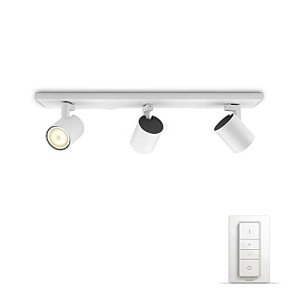Traditional Lighting in the UK: A Comprehensive Overview
Traditional lighting holds a valued place in the homes and public spaces of the United Kingdom. With its ability to stimulate nostalgia, beauty, and heat, traditional lighting fixtures provide not just visual appeal however likewise practical value. This post explores the numerous types of traditional lighting common in the UK, their history and development, popular styles, and how to include them into modern decoration.
A Historical Perspective on Traditional Lighting
The development of lighting in the UK has actually been substantial. From the flickering flames of candle lights and oil lamps to the advent of gas and electrical lights, the journey is as remarkable as it is enlightening.
Secret Milestones in Lighting History:
- Candles (Before 1800s): The earliest kind of synthetic light, utilizing tallow or beeswax.
- Oil Lamps (Late 18th Century): These became popular in homes and theaters, supplying brighter illumination than candle lights.
- Gas Lighting (Early 19th Century): Revolutionized public and street lighting before electricity took precedence.
- Electric Lighting (Late 19th Century): Marked the shift to modernity, with incandescent bulbs slowly changing older forms.
Each of these developments led the way for traditional lighting, which still incorporates ancient methods into contemporary styles.
Types of Traditional Lighting
Traditional lighting can be classified into several distinctive types, each with its distinct characteristics.
1. Chandeliers
Chandeliers are typically the centerpiece of a room. They can be found in numerous styles, from ornate Victorian styles to simple, rustic designs.
Popular Features:
- Crystal decorations
- Iron structure
- Numerous bulb types
2. Wall Sconces
Wall sconces provide both creative flair and soft lighting. They can be utilized in hallways, living rooms, or bathrooms, improving the atmosphere of an area.
Typical Styles:
- Candle-style sconces
- Brass or iron fixtures
- Vintage-inspired styles
3. Table Lamps
Table lamps embody the versatility of traditional lighting as they can suit any room. Ranging from simple designs to ornate pieces, they are perfect for reading nooks, side tables, or desks.
4. Floor Lamps
Comparable to table lamps in style and function, floor lamps can produce cozy corners in a home. Vintage styles often consist of tripod bases or complex patterns.
5. Lanterns
Though frequently associated with outdoor settings, traditional lanterns can also be used inside for a rustic touch. They are available in numerous products including wood and metal.
Integrating Traditional Lighting into Modern Decor
In a world progressively leaning towards minimalism and modern styles, traditional lighting still holds its ground. The secret is to preserve a balance. Here are some pointers for incorporating traditional lighting into a contemporary home:
1. Mix Styles
Combine traditional lighting with modern furnishings to develop a diverse room. For example, a vintage chandelier can be hung above a sleek dining table.
2. Usage Dimmer Switches
To control the ambiance, install dimmer switches that permit soft lighting, which complements both traditional and modern interiors.
3. Choose Mixed Materials
Select lighting fixtures that combine various materials, such as a wooden lamp with a metal or glass base, to bridge the gap between old and brand-new.
4. Highlight Architectural Features
Use traditional fixtures to highlight unique architectural functions in your home. For example, hanging a vintage lantern in a hallway with exposed brick improves its rustic appeal.
5. Integrate Natural Elements
Select styles that integrate natural products such as wood or wrought iron. These elements tend to blend well with modern design while retaining a traditional flair.
Table: Comparison of Traditional Lighting Types
| Lighting Type | Description | Typical Materials | Common Settings |
|---|---|---|---|
| Chandeliers | Decorative ceiling fixtures, typically ornate | Crystal, metal | Dining-room, ballrooms |
| Wall Sconces | Mounted fixtures that offer ambient light | Brass, iron | Hallways, living spaces |
| Table Lamps | Portable lamps for tables and desks | Glass, ceramic | Bedrooms, offices |
| Floor Lamps | Standalone lamps for corner lighting | Wood, metal | Living spaces, dens |
| Lanterns | Rustic or vintage light sources | Wood, metal | Patios, gardens |
Often Asked Questions
1. What is traditional lighting?
Response: Traditional lighting refers to lighting fixtures that embody historic or traditional designs, typically defined by the usage of elaborate products, intricate patterns, and a warm visual.
2. How can I preserve traditional lighting fixtures?
Response: Regular dusting and occasional deep cleansing are important. For fixtures with glass or crystals, utilize a mild glass cleaner. For metal components, guarantee you utilize appropriate cleaning solutions that won't harm the finish.
3. Are Affordable Lighting UK -efficient?
Response: Many traditional fixtures can accommodate modern LED bulbs, which use much better energy efficiency. Constantly check compatibility when switching to LED choices.
4. Can I mix traditional lighting with modern design?
Response: Yes, mixing traditional lighting with modern design can develop an uniquely welcoming space. Balance is crucial; choose complementary styles to preserve visual harmony.
5. What is the very best way to pick traditional lighting for my home?
Answer: Consider your home's general design, the function of the area, and personal taste. Take measurements to make sure proper sizing and select products and colors that harmonize with existing decoration.
Traditional lighting works as an enduring link to history, workmanship, and aesthetics, showing that ageless styles have their rightful location, even in the middle of progressing trends. Comprehending the various types of traditional lighting and their application can assist homeowners produce inviting areas that show both sophistication and warmth, perfectly blending the past with the present.

